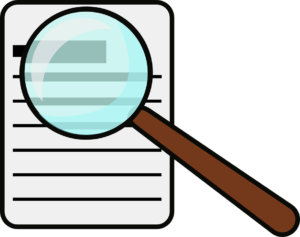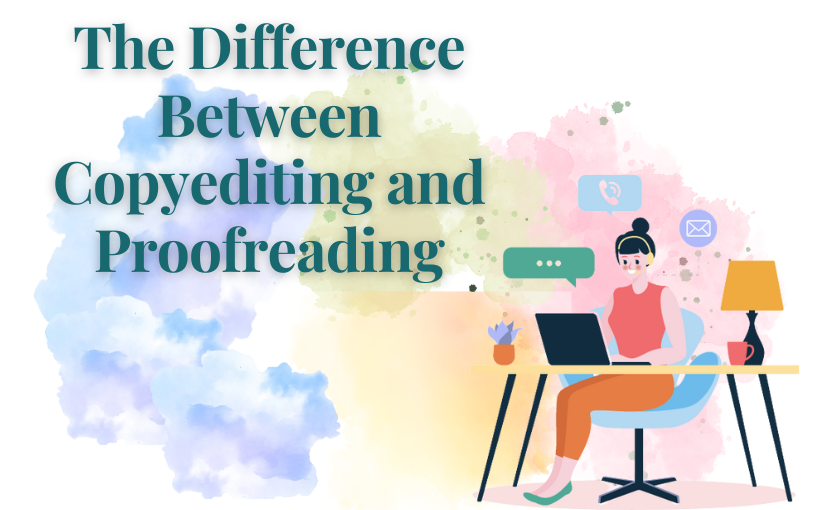Before going for editing services, the most difficult question one may be grappled with is the difference between the different kinds of editing services.
Open the internet and you will find an array of editing services, all with different names and it leaves you perplexed – what do all these services mean and what is the right service for my work?
If you approach a company that offers you good proofreading services and editing services, they might help you out with your queries, but then it is always better to be prepared and informed about it yourself as well.
To help you accomplish that, we will today shed some light on the differences between copyediting and proofreading services. While copyediting may be recommended for manuscripts, proofreading services are generally helpful for all kinds of documents.
Copyediting:
Copyediting services help you to correct the glaring mistakes of inconsistency and repetition. There are chances that sometimes, your document may have some parts that are being repeated, and you may just sort of miss seeing them because of the sheer vastness of the work.
There also are times when the document may seem to have adjoining parts which show a lot of inconsistency in terms of meaning or relevance.
Copyediting eliminates such problems and makes your document’s flow better in all senses. Most of the reputed copyediting services in the UK can help you to achieve such changes in your works.
The above-listed problems are generally seen in academic documents, where a lot of research is involved and a certain word count is to be achieved.

In such cases, the writer tends to subconsciously repeat the same parts. If you work in sync with your copyeditor, you can bring about the required changes in your work in a desirable manner.
Contrary to what many believe, a copyeditor is a lot more than just an overrated proofreader. They are the ones who build the important bridge between your rough draft and your published document, thereby helping to make your work presentable to the world.
So, it would not be an overstatement to say that they are your partners in the publishing process. Copyediting, apart from correcting such major changes in the document, also focuses on the trifle mistakes and tends to change them too.
However, the results of the process depend on the copyeditor because unlike a tool or a fixed technical system, copyediting is a work of skill and the more skilled your copyeditor is, the better he or she will work on your document.
They, therefore, have to be both technically sound, while also being aware of the themes that you may be aiming to highlight. The copyeditor would check the technical consistency of your document.
For example, if you have used the word “McDonald’s” on one page, and “Macdonald’s” on another, although both are grammatically correct, they are not consistent and while most of the people may miss this small change, a copyeditor is highly likely to catch it.
They will also check your work for the spelling styles – American English and British English. So, if you have written, “Bred went to the toilet” in one place and “Bred went to the washroom” in another, the copyeditor will correct it and make it uniform throughout.
If you are writing a story, a copyeditor’s work becomes much more detailed and difficult because they will have to check the consistency of the story in terms of the context.
If a poor person is eating his breakfast at the Hilton Hotel, it is not convincing to the reader and while you may not even realize it, a copyeditor would discuss it with you and tell you what needs to be changed and why.
Copyediting is a service that can be taken up by writers who believe that their comprehension is perfect and they are ready to take the next step. It is appropriate to keep copyediting as the very final step of your process.
A good copyeditor would take anywhere between two weeks to a month to copyedit your work to perfection.
Proofreading:
Proofreading is the super-final step of the editing process. When you are certain that your document has been worked on enough and extensively for all of its mistakes, redundancy, and inconsistency, you can print your manuscript and once printed, get it proofread.
It is the final step where the minutest things are looked at and refined. There may be a comma missing somewhere, or there might be an article missing at some other place, for example, you may be written, “United States of America” instead of “the United States of America”.
Now such mistakes are very trifle and the writer can seldom catch them. In such times, a proofreader, as a third person and a reader, can easily figure out the shortcomings and work on them or suggest you work on them.
Since such mistakes are also commonly found in dissertations, there are special dissertations proofreading services available in the markets.
While the proofreader may catch the minutest mistakes and make the corrections, if there are too huge or glaring mistakes in the document submitted, they may return it for further copyediting services.
So, in a way, it would be appropriate to say that the proofreader is nothing but a checker who checks the already edited works to refine them and bring about a superior quality to them.
Some also believe that proofreading is a certain sort of art, which deals with checking the different mechanics that are involved in the publishing works.
The proofreading rates may vary according to the type of document you have. So, if your work is a small essay which only needs the basic grammatical correction, the services would cost you less.
However, if you have a large manuscript to get checked, it may be a little bit on the higher side.
The basic difference between copyediting and proofreading, can, therefore, be called a difference in the degrees to which the document is edited.


